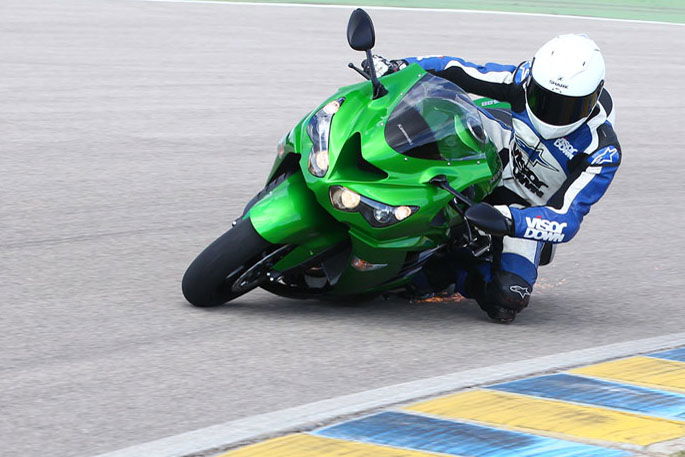Triumph Speed Triple R review
Triumph call it the ultimate Speed Triple. We'll be the judge of that


Ah, the R. A letter that invokes visions of exotica, exclusivity and excess carbon fibre. For those lucky enough to have owned one, those thoughts are quickly dispersed by the memories of a numb arse, stiff neck and probably sore wrists, too.
The R, once preserve of the superbike set has spilled over into almost every category. Should the letter R be reserved for superbikes and what really makes a bike justify the addition of the coveted R status? Has its significance been lost? In a world of increased marketing hype and tenuous links to racing, it appears the R now gets splashed around so much that it is to motorcycles what the word 'executive' is to a block of flats.
So is the Speed Triple R worthy of its R status? Better suspension? Check. More stopping power? Check. Less weight? Check. Gratuitous amounts of carbon fibre? Check. A more powerful engine? Erm, well, no. Triumph have kept the engine's output exactly the same as the standard model. Surprised? Well, I was too, to be honest.
What’s new?
Let's look at all these cool new parts. Triumph aren't just name-dropping; it's all proper stuff and very similar to what's used on the Daytona 675R.
The Öhlins forks use the NIX30 cartridge kit, the same as used on the Daytona 675R and soon to be released Ducati Panigale S. The 30mm piston in the forks is used throughout most of the Öhlins range and is designed to improve feel. The stock Speed Triple uses 9.0 springs in the forks, but the R uses 9.5; so slightly stiffer, but not extreme. The rear shock is the Öhlins TTX36, as used on the Daytona 675R and Panigale S. Once again, the spring in the Speed Triple R's rear shock is slightly stiffer than that of the standard bike; it uses a 100 instead of a 95.
The Brembo monobloc braking setup is the same as what's on the Daytona 675R but also very similar to the setup on Ducati's 1198SP, Aprilia's RSV4 and the KTM RC8R. None of which are known for being under-braked. Steel braided brake lines come as standard too, common sense really, but also a nod to the fact Triumph haven't skimped on their vision of creating the ultimate Speed Triple.
If exclusivity is what you're after, then look no further than the wheels. The forged aluminium 5-spoke wheels have been made especially for Triumph by PVM and are 1.7kg lighter than the standard model's wheels.
The Speed Triple also gets a heavily revised gearbox, which will also trickle down to the standard model. 10 of the 12 gears, both shafts and selectors have been revised and each gear now features 5 dogs, not 4 to increase 'the opportunity for engagement'. Put simply, the changes are designed to make gear changes slicker and smoother.
Last but not least in the arsenal of any serious 'R' contender: lashings of unnecessary yet at the same time completely necessary carbon fibre. Afterall, we've already established it wouldn’t be an ‘R’ without it.
So what’s it like to ride?
At first I was dubious when I heard the launch location was the MotoGP circuit Jerez. If it was host to GPs then I thought we'd spend most of our time flat on the tank with the throttle wound open, but Jerez is one of those circuits that has a great balance of fast flowing sections, power straights and tight hairpins. Lap times around here don't differ that much between 1000s and 600s.
Sat on the Speed Triple R it doesn't feel any different to the standard model; there's still the roomy feel, thanks mostly to the wide bars but the footpegs remain in the same position too, so the overall comfort hasn't changed. Seat height remains the same, rake and trail remains the same – it hasn’t been jacked-up at the back or shoved on its nose.
It's only when you're rolling that you start to notice the difference between the R and the standard version. Although the weight has only been reduced by a couple of kilograms; it's weight-loss where it counts. Sure, although lightweight wheels aren't the be-all-and-end-all in terms of handling, you can really feel the reduction in wheel inertia, it feels like you're holding onto the handles of a space hopper; the front feels light and eager to change direction and we're barely out of pitlane.

